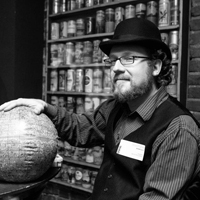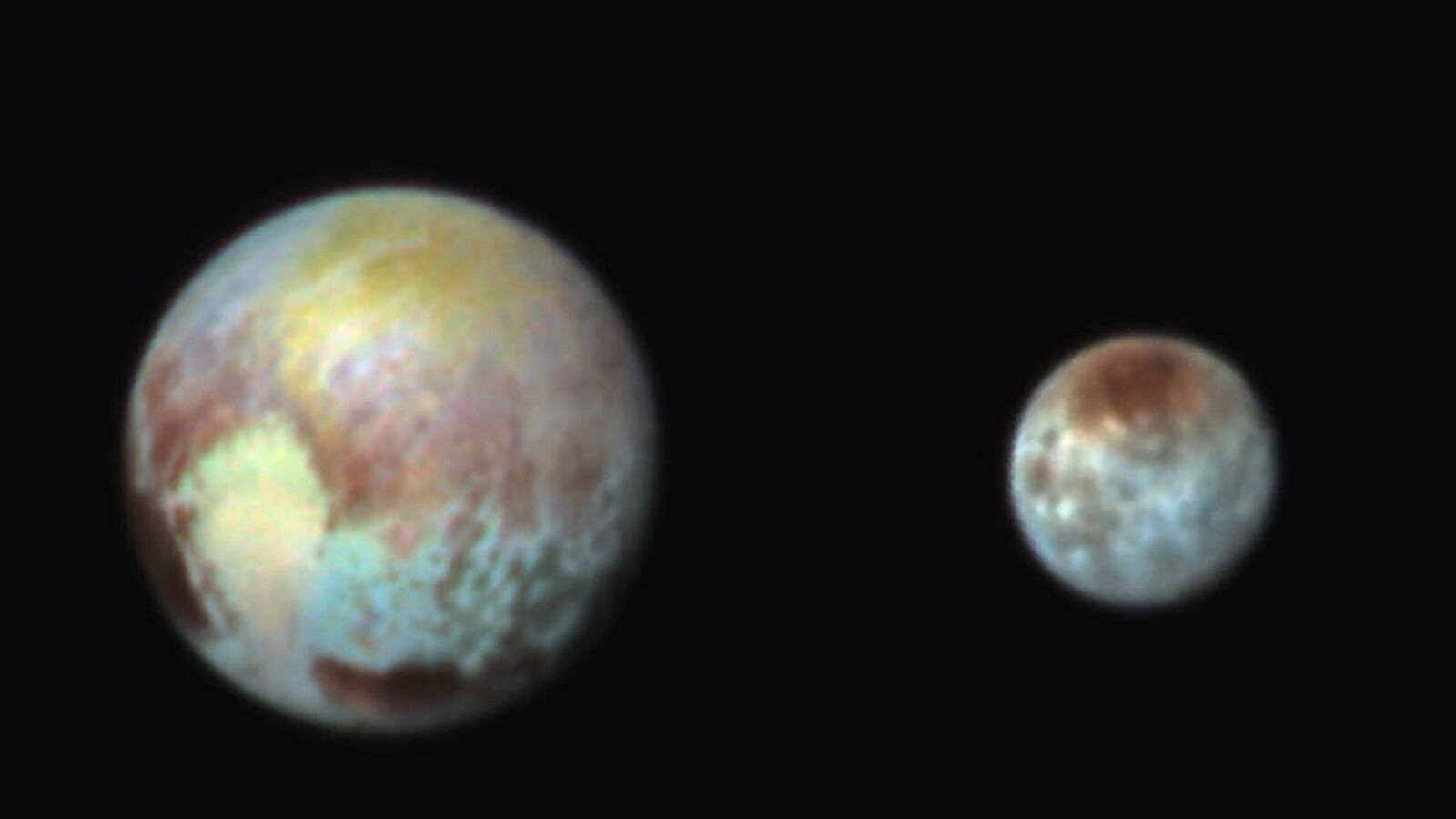Yesterday marked a major scientific achievement. The robotic space probe New Horizons sped by Pluto, taking huge amounts of photos and data. That’s the first time we’ve ever sent a probe to Pluto, the former ninth planet and the first object in the Kuiper belt, the cold region beyond Neptune.
If you’re like me, you’re feeling tired but still excited by all the amazing Pluto events from the last few days. However, for the New Horizons team, the real scientific work has barely started. The probe will be beaming back the data it collected yesterday for the next 16 months. Not only that, New Horizons is heading deeper into the Kuiper belt, where researchers hope to fly by another icy world to study.
Of course, flying by anything else depends on money and finding the right target; the New Horizons scientists are working on both. The Kuiper belt has a lot of empty space, but the probe could still pass by one or more objects smaller than Pluto—but no less interesting in many ways, because we still have a lot to learn about the outer Solar System.

The Kuiper belt is named for Gerard Peter Kuiper, who predicted that a lot of small icy fragments would be left over from the formation of the Solar System. Pluto, discovered in 1930, lies on the closer edge of the belt, so whether you call it a planet or not, it’s also a Kuiper belt object (KBO). There’s stuff even farther than the Kuiper belt: the Oort cloud, which is the source of many comets, stretches halfway to the next star, and astronomers discovered Sedna and a few other small worlds in orbits far beyond the outer Kuiper belt.
The literally cool thing about KBOs is that they’re pristine. Early Earth looked a lot different than it does today, from the chemistry of the atmosphere to the amount of water on the surface. KBOs like Pluto have changed very little by comparison, so they’re a chemical snapshot of the early Solar System, a way of looking into the past.
Astronomers found the first KBO other than Pluto in 1992, followed by Eris, Makemake, Haumea, Quaoar, and other large KBOs found over the last 15 years. (“Large” is relative: they’re all smaller than Pluto, which itself is about 2/3 the size of the Moon.) These objects aren’t all alike: Eris is simultaneously smaller but more massive than Pluto, so it has higher rock content, while Pluto is icier. That means there’s diversity in KBO makeup: objects didn’t all form alike, and don’t have the same type of internal structure.
Whatever the next target for New Horizons is, it’s likely to be a little different than Pluto, just like Pluto is different than Eris is different than Pluto’s moon Charon. How different? That remains to be seen, but that’s also why science like this is exciting. The Kuiper belt is a long way out, so even the most powerful telescopes can only bring us bits and pieces of information about KBO chemistry, colors, shapes, and sizes.
Unfortunately, the Solar System isn’t cooperating for New Horizons to fly by Eris, Quaoar, or any of the other big KBOs. Eris, for example, is nearly on the opposite side of the Sun from Pluto. Despite what science fiction movies would have us believe, it’s not an easy matter to just take a spaceship across that kind of distance. New Horizons doesn’t have the fuel for maneuvers like that, and building a ship that could go anywhere we want is beyond our technical means right now.
With Eris and its kin out of the question, that leaves smaller chunks of ice and rock. These are unlikely to be spherical, so they’ll look more like the asteroids and comets we’ve seen in terms of shape. However, their internal makeup is bound to be more comet-like, which isn’t surprising: many comets come from the Kuiper belt originally before they drift into the inner Solar System. Their ice melts and makes the distinct tails; many KBOs would also grow tails if they were unfortunate enough to fall toward the Sun.
GALLERY: Pluto and Other Epic Space Photos

So if we want to visit Eris, we’ll need another probe. (Write your congresspeople, kids!) Meanwhile, New Horizons will keep beaming back data at its painfully slow rate, telling us all about Pluto’s surface features and chemistry, along with vital information about Pluto’s big moon Charon, smaller moons, and anything else it finds. And if all goes well, NASA’s budget will allow New Horizons to steer toward another KBO, where we’ll have even more to see and learn. The plutonium battery aboard the probe should keep its computers and sensors operating roughly another 15 years, so expect a lot more science from the cold edge of the Solar System.






